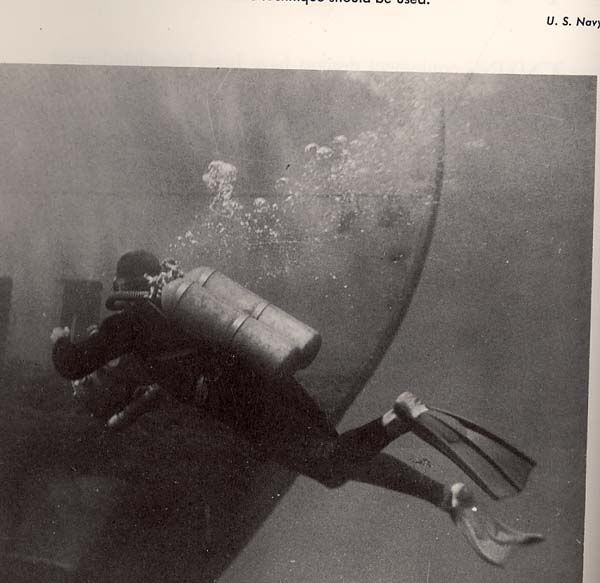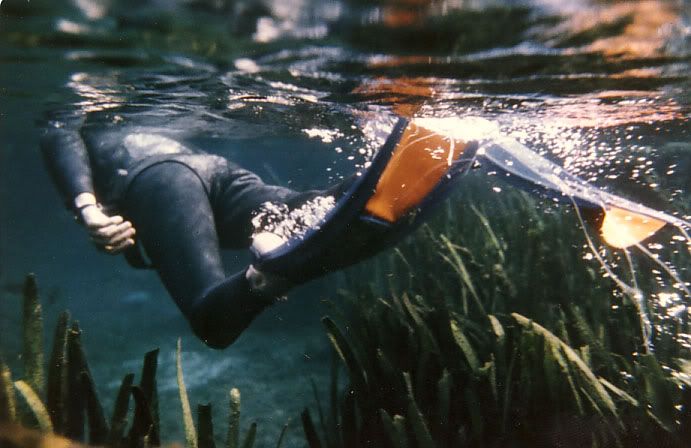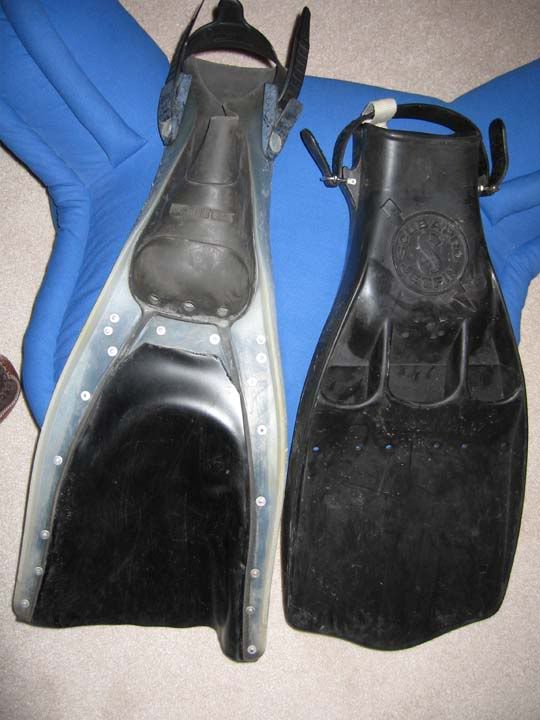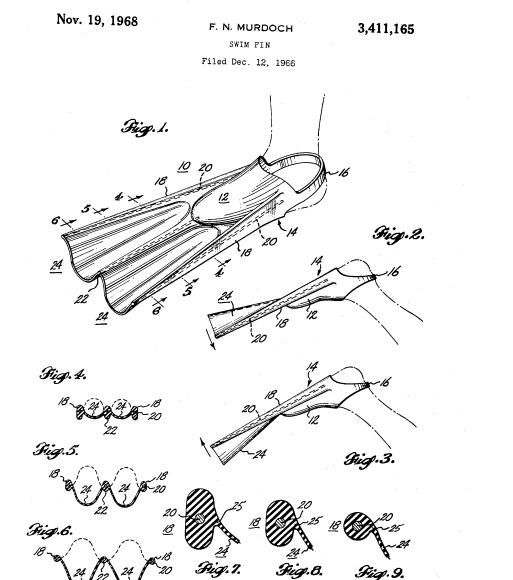David Wilson
Contributor
I'd also like to thank Sam for his message #11 about the history of fins. I'd like to add a little more historical information:
Jet Fins were originally designed by the French diving equipment company Beuchat, headquartered in the French Mediterranean port of Marseilles. Beuchat's original "Jetfin" version was a full-foot, closed-heel design, with an additional heel strap for a secure fitting:

Throughout the sixties, in Europe where they were invented, full-foot fins were considered top of the line when it came to fins and priced accordingly much higher than open-heels. I've read somewhere that the largest-sized Beuchat Jetfins were manufactured as open-heels because making them full-foots would have resulted in them being prohibitively expensive.
Moving on to the modern era, a YouTube video appears to show Scubapro Jet Fins being assembled in an unnamed factory. Online research suggests that the factory in question belongs to Pacific Molding Inc of Corona, California (pacificmolding.com). You can watch the video for yourself at
YouTube - How is made - Scuba Dive Rubber Fins
The pale-blue fins in the initial sequence appear to be Oceanways Aquapros. There is evidence that UDT Duck Feet are also manufactured in the Pacific Molding facility now that their moulds have been repatriated from Mexico to the USA by Greg Deets:
AllAboutSurf.com - An Interactive Surf Magazine
Hope this additional information is of interest to somebody.
Jet Fins were originally designed by the French diving equipment company Beuchat, headquartered in the French Mediterranean port of Marseilles. Beuchat's original "Jetfin" version was a full-foot, closed-heel design, with an additional heel strap for a secure fitting:

Throughout the sixties, in Europe where they were invented, full-foot fins were considered top of the line when it came to fins and priced accordingly much higher than open-heels. I've read somewhere that the largest-sized Beuchat Jetfins were manufactured as open-heels because making them full-foots would have resulted in them being prohibitively expensive.
Moving on to the modern era, a YouTube video appears to show Scubapro Jet Fins being assembled in an unnamed factory. Online research suggests that the factory in question belongs to Pacific Molding Inc of Corona, California (pacificmolding.com). You can watch the video for yourself at
YouTube - How is made - Scuba Dive Rubber Fins
The pale-blue fins in the initial sequence appear to be Oceanways Aquapros. There is evidence that UDT Duck Feet are also manufactured in the Pacific Molding facility now that their moulds have been repatriated from Mexico to the USA by Greg Deets:
AllAboutSurf.com - An Interactive Surf Magazine
Hope this additional information is of interest to somebody.













